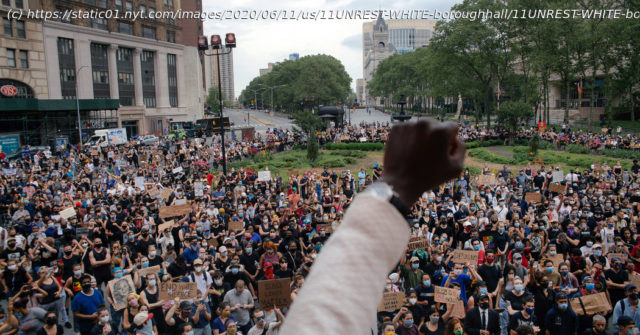Early demographic data shows a significant presence of white protesters.
As crowds have surged through American cities to protest the killing of George Floyd, one of the striking differences from years past has been the sheer number of white people.
From Minneapolis to Washington, D. C., marchers noticed the change, and wondered what it meant that so many white Americans were showing up for the cause of justice for black Americans.
“I was shocked to see so many white kids out here,” said Walter Wiggins,67, as he sat near the heart of the protests in Washington last week. Mr. Wiggins, a retired federal worker, who is black, remembered attending the March on Washington in 1963 and other civil rights events with his parents. “Back then, it was just black folks.”
Why is this happening now? The video of a white police officer refusing to remove his knee from Mr. Floyd’s neck for nearly nine minutes has horrified Americans as attitudes on race were already changing, particularly among white liberals. Another driver is opposition to President Trump, who since his election has drawn large crowds of protesters. Finally, there is the coronavirus pandemic, which has left millions of Americans — including college students — cooped up at home, craving human contact. The result was hundreds of thousands of white Americans in the streets.
“This is utterly different from anything we’ve seen,” said Douglas McAdam, a sociologist at Stanford who studies social movements, referring to the recent protests. Since the death of Michael Brown in Ferguson, Mo., in 2014, every highly publicized death of an African-American man while in police custody brought protests, he said, “but overwhelmingly in the black community.”
The pattern evident in the streets has now been confirmed by early demographic data: Researchers fanned out across three American cities last weekend and found overwhelmingly young crowds with large numbers of white and highly educated people.
A team of 11 volunteers asked every fifth person they encountered to fill out a survey and gathered data from 195 people in New York, Washington, D. C., and Los Angeles. The researchers, Dana R. Fisher, a sociologist at the University of Maryland, and Michael T. Heaney, a political scientist at University of Michigan, used an established method for studying street protests. They said their numbers provided only rough estimates, but offer the first, more systematic look at who the protesters are.
White protesters made up 61 percent of those surveyed in New York over the weekend, according to the researchers, and 65 percent of protesters in Washington. On Sunday in Los Angeles,53 percent of protesters were white.
It is not just protests. White Americans are going through a wave of self-examination, buying books about racism, talking to black friends, and arguing within their own families.






